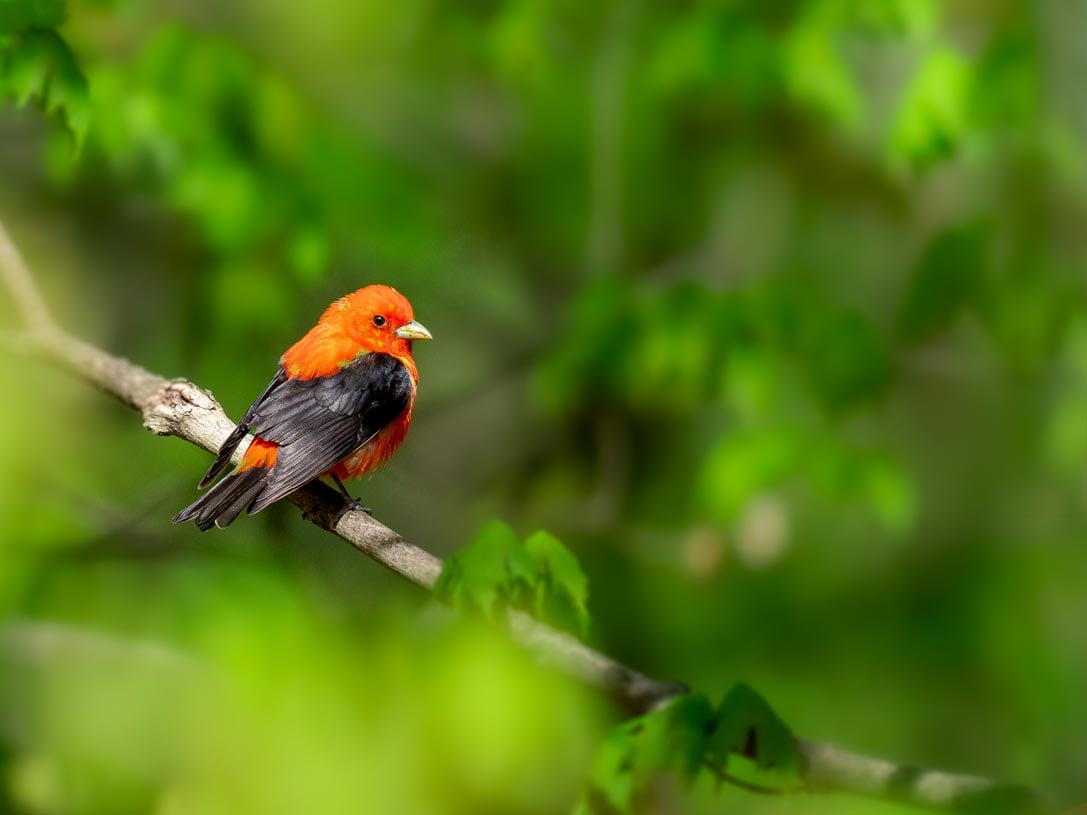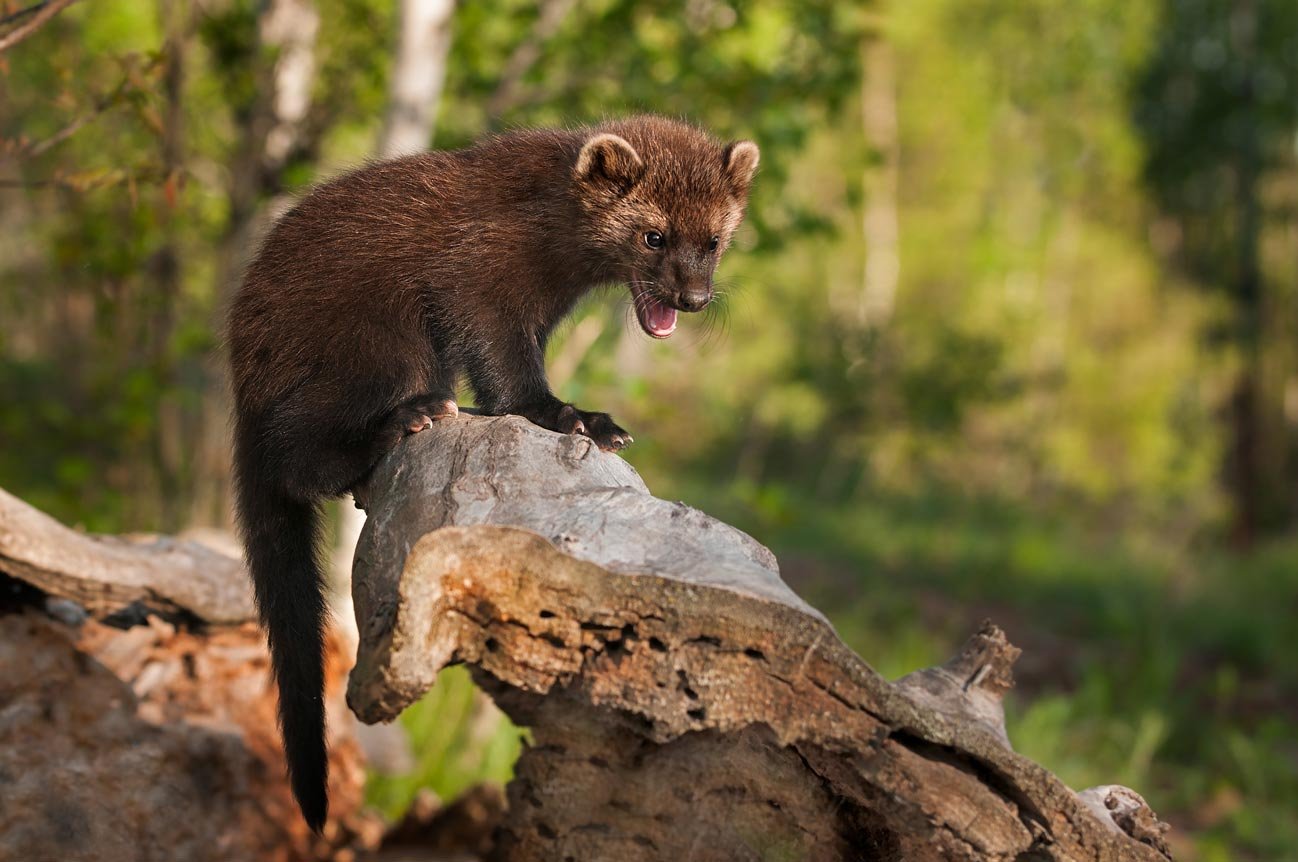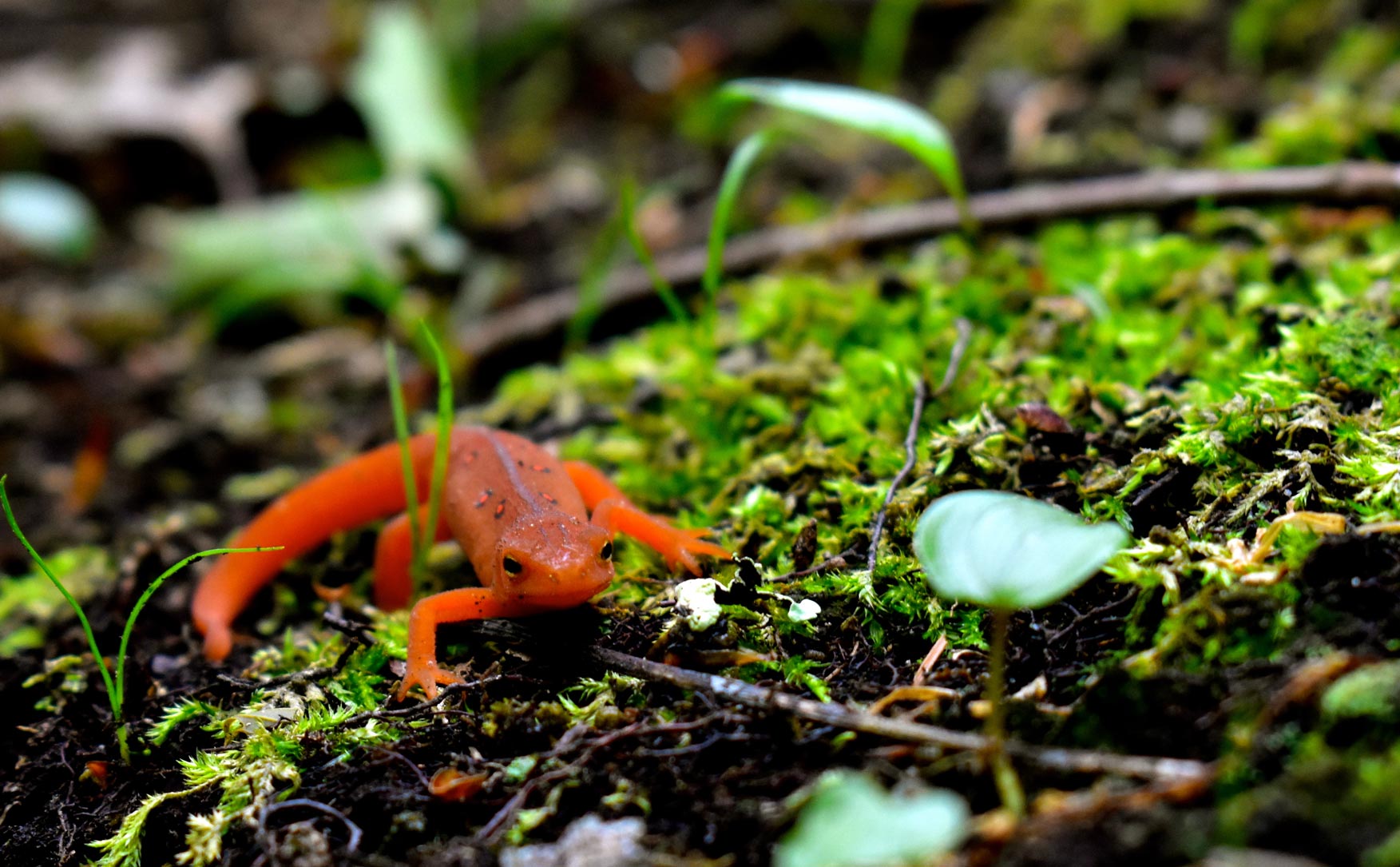May is a great month to be out and about in your woodlands. With plants and trees in bloom, and birds and animals busy raising their young, you can see and celebrate the beauty and abundance of nature.
As a forest owner, you understand that this wonderful diversity of life can’t be taken for granted. Many species of plants and animals are in danger of disappearing from the earth. But there are things that you can do to help.
 A beautiful male Scarlet Tanager, a summer resident of deciduous woodlands in the eastern United States.
A beautiful male Scarlet Tanager, a summer resident of deciduous woodlands in the eastern United States.
Learn about the Issues
Two special days this month - Endangered Species Day on May 21 and the International Day for Biological Diversity on May 22 - highlight the importance of protecting and preserving the habitat for all species of plants and animals—especially those whose existence is threatened or endangered.
On Endangered Species Day, wildlife refuges, zoos, aquariums and nature and community groups all across the United States will hold special activities focused on species at risk. These events – many online due to Covid concerns – are assigned to educate people about what they can do to assist threatened species in their communities and in locations around the world. (You can search for activities in your area at the Endangered Species Coalition website.)
The theme for this year’s International Day for Biodiversity is "Our solutions are in nature". It reminds us that the diversity of nature can hold the answer to many of the challenges that we’re currently facing: climate change, health problems, food and water security, and sustainable livelihoods. Get updates about associated events at the United Nations Biodiversity Facebook page and by following the UN Biodiversity Twitter feed.
Find Funding for Habitat Creation
As a forest owner, you have the opportunity to create a welcoming home for a wide variety of native plant and animal species. But that can be an expensive proposition, especially if it means removing invasive species and planting new trees to restore the right ecological balance to your woodlands.
WoodsCamp can help you find programs in your area that will help cover these costs. Just go to the WoodsCamp home page and enter the information about your property. You’ll receive a free report about your land, free assistance (including a visit) from a forestry professional, and a list of helpful resources and potential funding for habitat restoration projects on your property.
WoodsCamp will also link you to My Land Plan on the American Forest Foundation’s website. You can use the Forest Journal tool to record descriptive and location information about the various plants and animal species that you are seeing on your property.
 Fishers are a a forest-dwelling creature whose range covers much of the boreal forest in Canada to the northern United States.
Fishers are a a forest-dwelling creature whose range covers much of the boreal forest in Canada to the northern United States.
The Family Forest Carbon Program
If you’re a woodlands owner in Pennsylvania (and soon in West Virginia or Maryland, too), WoodsCamp may direct you to an exciting new woodlands management/financial assistance program developed in partnership with the American Forest Foundation and the The Nature Conservancy among other organizations.
The Family Forest Carbon Program (FFCP) encourages sustainable forest management practices that can help increase the amount of carbon stored in wooded lands. These practices will enhance the health of woodlands, creating a better habitat for birds and other wildlife, including some threatened and endangered species.
The funding for these improvements comes from the increased carbon that is stored by healthier trees in better managed forests. Through FFCP, businesses can now buy these carbon credits from family forest owners to offset the environmental impacts of their operations.
FCCP is a win for biodiversity: it helps ensure that native plants and animals, including some that are on the threatened list, can live in the environments that will enable them to survive and thrive. It’s a win for family forest owners, who can finally benefit from the forest carbon programs that large owners have been taking advantage of for several years. And it’s a win for businesses, which can take advantage of the program to help reduce the impact of climate change.
The program isn't just a win for landowners and the climate, but helps provide funding for important forest management. Partnering with the National Audubon Society, FFCP is being used to improve habitat for a wide variety of forest birds. The same practices which increase carbon storage and improve the health of forests can be used to provide habitat for forest birds. Many unmanaged forests lack the understory structure like saplings and bushes which mature forest birds need to feed and nest. Other forests suffer from invasive species which limit the growth of native plants and the success of early successional forests. The FFCP is a great program landowners can use to not only sustainably manage their forests but to provide quality habitat for many declining bird species.
 Eastern Newts frequent small lakes, ponds, and streams or nearby wet forests.
Eastern Newts frequent small lakes, ponds, and streams or nearby wet forests.
Creating Better Habitats
The FCCP offers two sustainable forest practices for which landowners can qualify.
Enhancing Future Forests involves removing invasive and unwanted plants from your property. Invasive species can overtake a forest, preventing the next generation of trees on your woodland from getting the proper amount of sunlight, water and nutrients to regenerate.
In this program, you’ll commit to reducing competing vegetation on your property by at least 85%, and to maintaining that balance for 10 years. In return, you’ll receive total payments of anywhere from $50 to $280 per acre, depending on complexity of the invasive species removal.
Harvesting too many trees or harvesting in a non-sustainable way can also destroy plant and animal habitats. FFCP’s Growing Mature Forests practice limits harvests so that trees can grow larger and requires forest owners to develop two 10-year forest management plans. That, too, will help create an environment where native plants and animals can thrive.
Landowners’ compensation for this program ranges from $100 to $230 per acre.
The good news is that you won’t have to figure this out on your own. FCCP includes the assistance of a service forester, who can help you determine if your land is eligible for FCCP and which practice might be better for your land – and for the plants and animals living on it.
If you live in Pennsylvania, May is a good time to find out if you qualify for the Family Forest Carbon Program; the program is already underway there. If you live in West Virginia or Maryland, FCCP should be coming to your area later this year. Later this year and in 2022, FCCP will be rolled out to family forest owners in the Northeast and Midwest.
If you register online at the FCCP site, you’ll receive notices about when the program will be coming to your area. You’ll also get periodic tips about woodlands management – including information on creating a forest where there’s a diversity of plant and animal life.


We want to hear from you.